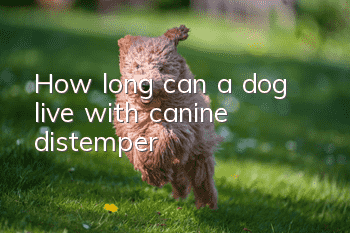Feeding Class | Husky Diet Guide for Each Stage

The cute and naive Huskies are becoming more and more popular. More and more families are raising them, and their breeding methods are attracting more and more attention. Raising huskies is really a delicate job and requires patience. There will also be some big and small problems encountered during the breeding process, but if you make enough preparations before raising them, you won't make any big mistakes.
1. Puppy stage
Huskies are very fragile when they are young and often get sick. At this time, their diet is very important. They can get various nutrients from their diet, strengthen their body's resistance, and live a healthy life.
It is good for Huskies to eat dog food when they are 2 months old, because dog food is rich in nutrients and balanced, and all the elements that the dog needs during its growth can be found. When feeding, pay attention to feeding the Husky until he is seventy percent full. Eating too much will cause poor digestion. Do not exercise strenuously immediately after eating. In addition, do not feed milk to the Husky puppy. The puppy's gastrointestinal condition is not good to begin with. The dog's gastrointestinal tract is even worse, and it will cause diarrhea if you are not careful.
A 4-month-old Husky can already eat some food other than dog food. You can make homemade dog food, but you must pay attention to nutritional balance. Also be careful not to let puppies eat people's leftovers, because dogs have different nutritional needs from humans. If you use human recipes to prepare dog food, it will not only be time-consuming and troublesome, but it will also be difficult for your dog to absorb complete and balanced nutrition. , do not let the little husky eat chicken bones, which will scratch its intestines and stomach.
Puppies aged 2 to 3 months should be fed 4 to 5 times a day. The daily allowance for each puppy is 200 grams of lean meat, 300 grams of milk, 1 egg, 250 to 500 grams of rice, 250 to 300 grams of vegetables, and salt. 3~5 grams, and supplement with appropriate amounts of vitamins and minerals, calcium powder such as super calcium, etc. If possible, you can give puppies some cartilage from pigs and cows to eat, but do not feed chicken bones. After 8 months of age, the dog can be fed according to the adult dog’s dietary standards.
2. Adult dog stage
1) Pregnant female husky
The feeding of female Huskies during pregnancy should provide sufficient high-quality feed to enhance the physical fitness of the female dog, ensure the sound development of the fetus and prevent miscarriage. In the first month of pregnancy, there are still few fetuses, so there is no need to prepare special feed for the female dog, but you must pay attention to feeding on time, not early and late. Generally, female dogs have poor appetite in the early stages of pregnancy, so palatable food should be prepared. One month later, the fetus begins to develop rapidly and its demand for various nutrients increases sharply. At this time, the fetus should be fed three times a day. In addition to increasing the food supply, the female dog should also be supplemented with protein-containing food, such as Meat, animal offal, eggs, milk, etc., and pay attention to supplementing calcium and vitamins to promote the development of fetal bones. After 50 days of pregnancy, the abdominal cavity is fullWhen the time comes, the amount of food eaten each time decreases. To prevent constipation, add an appropriate amount of vegetables. Do not feed moldy, spoiled feed, and other foods that are harmful to the female dog and fetus. Do not feed too cold feed and water to avoid irritating the gastrointestinal tract or even causing miscarriage.
2) Lactating female dog
The breeding of lactating female dogs must not only meet their own nutritional needs, but also ensure the need for milk production. If the female dog has poor appetite in the first few days after delivery, she should be fed digestible feed with less flour, such as milk, wheat flour, egg yolk, etc., and drink more water (avoid drinking cold water). After 4 days, the food intake will gradually increase, and return to normal in about 10 days. , during the subsequent lactation period, the amount of feed should be increased. In addition to once in the morning and afternoon, you should feed once in the middle every day. In terms of nutritional content, fresh lean meat, eggs, milk, chicken, bone meal, etc. should be added as appropriate. It is necessary to check the condition of the bitch frequently. For bitches with insufficient lactation, they can be fed brown sugar water, milk, etc., or cooked flaxseed and mixed with food.
3. Aged dog stage
When large dogs reach the age of 8, they enter their old age. Due to endocrine and other reasons, dogs in the old age have reduced calcium intake and increased calcium loss. At this time, elderly dogs should be fed food, otherwise they should be artificially supplemented with calcium while maintaining a certain amount of exercise. Otherwise, it will cause osteoporosis and increase the incidence of bone spurs and fractures.
In addition, the gastrointestinal function of elderly Huskies is not good, and the amount of activity is small, which can easily cause constipation, so you can add some plant fiber to it. If your old husky’s teeth are not very good, you can change the hard special dog food to softer dog food.
- Samoyed toilet training methods and precautions
- How to train a dog to catch a Frisbee? Training tips for dogs to catch a Frisbee!
- How to toilet train a pet dog? A simple training method!
- Several causes of vomiting in Miniature Schnauzers
- How to deal with fleas on dogs? Owners need to do these things!
- Causes and first aid measures for dogs coughing up blood
- How do you tell whether a Cocker Spaniel is pure? How to choose a purebred Cocker Spaniel?
- What should I do if my dog refuses to go out for the first time?
- Should dogs be leashed when going out?
- Can't get rid of dog and cat hair on the litter mat? Listen to the advice of foreign poop shovelers



